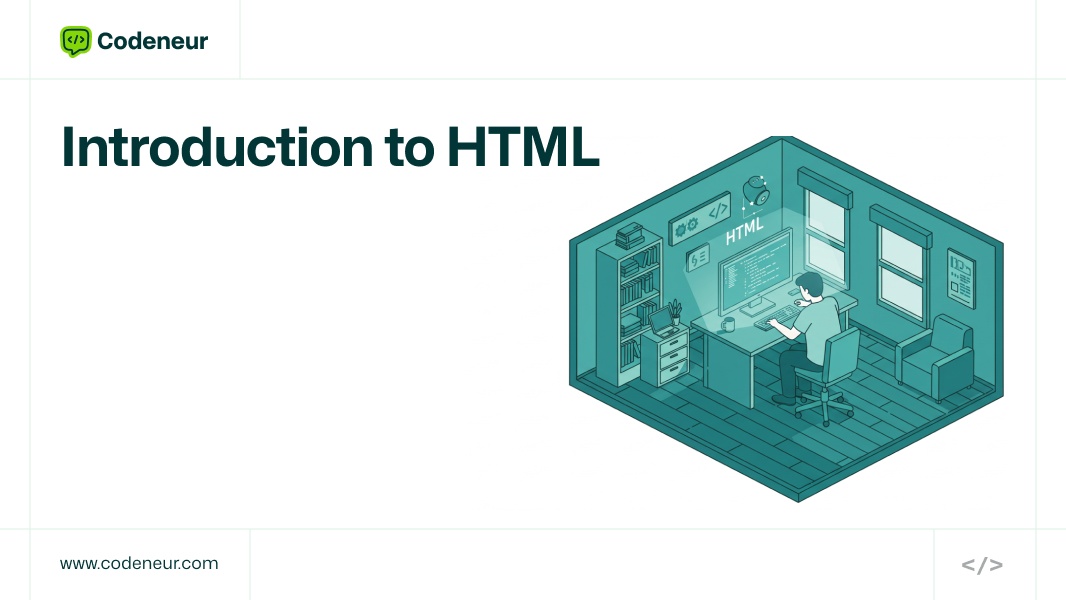This introduction to HTML serves as the basic step in creating web development, which forms the core language with respect to creating web pages. It provides not only the content but also its structure by formatting texts, links, images, among other elements that are arranged for browsers to interpret and display properly.
Whether you’re starting your journey as a web developer or just curious about how websites work, understanding HTML is the first step.
In this blog post, we will walk through what HTML is, why it’s important, and exactly how it fits into the larger world of web development. By the end of this, you will be armed with a good grasp of the foundation of web pages.
But if you want to know more about just how HTML actually structures a web page, do look out for our post on the Structure of an HTML Document.
What is HTML?
HTML stands for HyperText Markup Language. Therefore, it is just a markup language and not a programming language. Hence, it ensures the structure of a webpage and its presentational details while not performing activities or computations.
- HTML stands for HyperText Markup Language.
- This is the standard language of web page creation.
- HTML defines a web page structure by organizing contents into elements.
- HTML uses tags that inform the browser which content is present and where it should display.
- These tags are applied to explain any particular content, be it heading, paragraph, or link.
- In other words, HTML tells the browser how to understand and present what is on the webpage

Programming languages may include JavaScript, Python, or others. Tags in markup language help browsers to distinguish between contents for readability.
For example, an HTML tag might instruct the browser that some text is rendered as a heading, a paragraph, or a link.
Why is HTML Important?
Without HTML, there would be no structure on the web. HTML is necessary to create the pages that you visit daily, from blogs to e-commerce websites to news outlets.
It’s the skeleton of every website, providing the layout and allowing web browsers to understand how to display content.
HTML in the Web Development World
HTML is a part of the entire web development stack, with other two significant elements, CSS, and JavaScript, where the latter helps to create an interactive site while CSS deals with its presentation, whereas HTML takes care of structuring.
Getting familiar with web development: Start by mastering the use of HTML because it serves as the base of all other work done afterward.
With this knowledge of HTML, you can actually move on to the next levels like adding style with CSS and interactivity with JavaScript.
Conclusion
Understanding HTML is crucial for any aspiring web developer. The very basis of learning its simple tags and structure leads a person to becoming a creator of the web. Once a person has learned enough about this so-called “html,” they can then progress to further complex topics.
After that, we will delve into the Basic Structure of an HTML Document, a foundational concept that shows you how to build your own web pages.
Codeneur will teach you these very important skills so that you will become a great coder. Here are resources, tutorials, and guidance to support you every step of the way.
Start building your web development skills today and unlock the potential to create the next great website!
Key Takeaways
What is HTML?: HyperText Markup Language makes the main language responsible for organizing and formatting the contents of web pages.
HTML’s Impact on Web Development: HTML serves as a basic structure underlying webpages utilizing elements like headings, paragraphs, and links so that browsers can properly display them.
HTML vs Programming Languages: HTML is a markup language and not a programming language, it is central for web structure. JavaScript and CSS bring functional and design interactivity to it.
Importance of HTML: This is very important as it is a core foundation that frames a web-page design and layout.
Learning HTML: HTML is the first step to become a web developer; than learn CSS and JavaScript for advanced programming.

